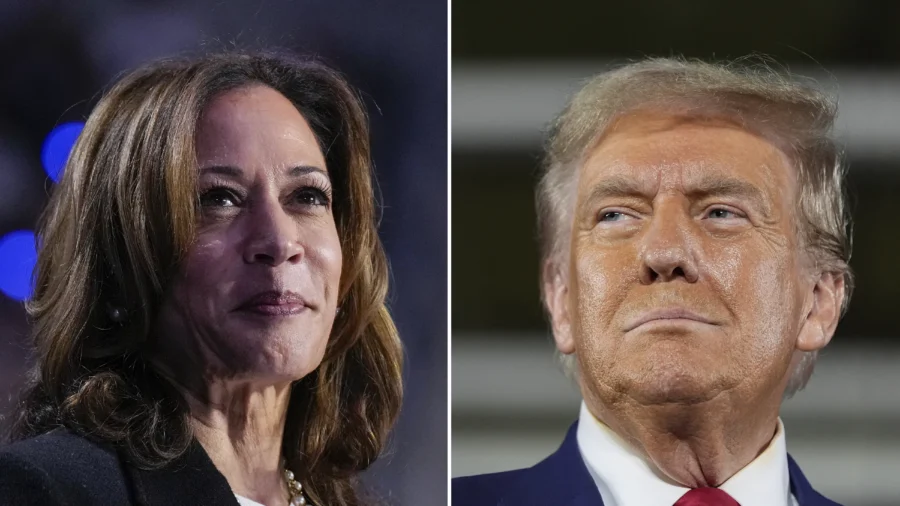WASHINGTON—Election Day is nearly upon us. In a matter of hours, the final votes in the 2024 presidential election will be cast.
In a deeply divided nation, the election is a true toss-up between Democrat Kamala Harris and Republican Donald Trump.
We know there are seven battleground states that will decide the outcome, barring a major surprise. But major questions persist about the timing of the results and the makeup of the electorate. At the same time, both sides are prepared for a protracted legal battle that could complicate things further.
Here’s what to watch on the eve of Election Day 2024:
How Long Will It Take to Know the Winner?
Election Day in the United States is now often considered election week as each state follows its own rules and practices for counting ballots—not to mention the legal challenges—that can delay the results. But the truth is, nobody knows how long it will take for the winner to be announced this time.
This time, both campaigns believe the race is extremely close across the seven swing states that are expected to decide the election, barring a major surprise: Arizona, Georgia, Michigan, Nevada, North Carolina, Pennsylvania, and Wisconsin.
The size of the map and the tightness of the race make it hard to predict when a winner could be declared.
Where to Find Early Clues about How Contest Might Unfold?
Look to two East Coast battleground states, North Carolina and Georgia, where the results could come in relatively quickly. That doesn’t mean we’ll get the final results in those states quickly if the returns are close, but they are the first swing states that might offer a sense of what kind of night we’re in for.
To go deeper, look to urban and suburban areas in the industrial North and Southeast, where Democrats have made gains since 2020.
In North Carolina, the margins for Harris in Wake and Mecklenburg Counties, which include the state capital of Raleigh and the largest city, Charlotte, respectively, will indicate how much support Trump will need to gain from the less-populated rural areas where he has dominated.
In Pennsylvania, Harris needs heavy turnout in deep blue Philadelphia, but she’s also looking to boost the Democrats’ advantage in the arc of suburban counties to the north and west of the city. She has campaigned aggressively in Bucks, Chester, Delaware and Montgomery counties, where Biden improved on Clinton’s 2016 winning margins. The Philadelphia metro area, including the four collar counties, accounts for 43 percent of Pennsylvania’s vote.
Elsewhere in the Blue Wall, Trump needs to blunt Democratic growth in Michigan’s key suburban counties outside of Detroit, especially Oakland County. He faces the same challenge in Wisconsin’s Waukesha County outside of Milwaukee.
Where Are the Candidates?
Trump will likely spend the very early hours of Election Day in Michigan, where he is scheduled to hold a final late-night rally in Grand Rapids as has become his tradition.
The Republican candidate plans to spend the rest of the day in Florida, where he is expected to vote in person. He’s scheduled to hold a campaign watch party in Palm Beach Tuesday night.
Harris plans to attend an Election Night party at Howard University in Washington, a historically black university where she graduated with a degree in economics and political science in 1986 and was an active member of Alpha Kappa Alpha sorority.
Aside from Howard, she has no public schedule announced for Election Day.
Harris said Sunday that she had “just filled out” her mail-in ballot and it was “on its way to California.”
Who’s Left to Show Up on Election Day?
On the eve of Election Day, it’s unclear which voters will show up to cast ballots on Tuesday.
More than 77 million people participated in early voting—either in person or through the mail. So many people already cast ballots that some officials say the polls in states like Georgia might be a “ghost town” on Election Day.
One major reason for the surge is that Trump has generally encouraged his supporters to vote early this time. The early vote numbers confirm that millions of Republicans have heeded Trump’s call in recent weeks.
There are also shifts on the Democratic side. Four years ago, as the pandemic lingered, Democrats overwhelmingly cast their ballots early. But this time around, without the public health risk, it’s likely that more Democrats will show up in person on Election Day.

